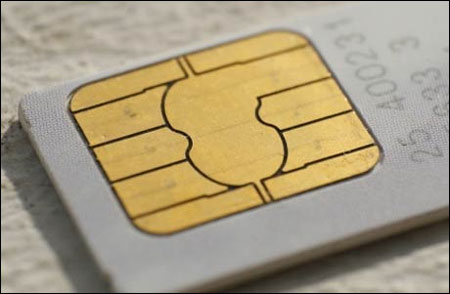Mobile operators and device manufacturers clash over SIM shortage
A disagreement between mobile operators and device manufacturers over e-SIMs has reached the government with the Cellular Operators Association of India (COAI) asking the DoT to order handset manufacturers to introduce eSIMs, in addition to the physical SIM slot, in all smartphones costing over Rs 10,000.
The reason is the unprecedented global shortage of semiconductors which has severely impacted the supply of SIM cards across the globe and pushed up the price by four to five times.
The shortage is not likely to improve before 2024.
The COAI’s proposal has been rejected outright by the Indian Cellular Electronics Association (ICEA).

Currently, eSIMs are limited to high end phones.
Only about 1-2 per cent of subscribers have them. In contrast, phones costing over Rs 10,000, according to the ICEA, account for over 80 per cent of the market in volumes.
Making the eSIM mandatory, argues the ICEA, will mean that many players will be forced to develop a new product design purely for the Indian market because other countries have not mandated such a move at all.
This will push up the costs of mid-level handsets ranging from Rs 10,000-Rs 20,000 which account for 50 per cent of the mobile market.
Finally, the cost of a SIM is marginal and even if it increases by five times, it is less onerous than the very high cost of introducing eSIM features in mobiles owing to design and implementation costs.
The ICEA says that mandating the eSIM for all mobile handsets will hamper the growth of the mobile industry as well as damage the export aspirations of the device makers.
The two industry bodies even disagree on how long the shortage will last.
The ICEA suspects that the demand made by mobile operators for mandatory eSIMS is based merely on the semiconductor shortage and, as such, their contentions seem very ‘exaggerated’.
The ICEA is less alarmist and believes the shortage will ease soon and even return to normal in 6-9 months.
The COAI contends that some international telecom operators are exacerbating the shortage by buying and hoarding SIM cards at a very high premium and at a 100 per cent advance payment.
Based on the COAI’s discussions with SIM suppliers, the supply situation seems unlikely to improve before 2024.
Things have not been helped by the sharp depreciation of the rupee.
It has led to a higher price for SIMS.
The COAI has been looking at ways to reduce eSIM waste given that customers and the retail channels seem oblivious of costs going up and supply lines drying up.
It is for these reasons that the association has been looking for alternative solutions.
The introduction of eSIMS in the price range it has suggested, argues the COAI, will shave off a reasonable quantity of physical SIMS.
It will also help to reduce the SIM wastage caused by mobile number portability, without compromising the flexibility of portability.
COAI: Prices of SIM cards have jumped as a result of supply-side issues
ICEA: SIM cards have negligible price, so even a 4-5x hike is lesser than the cost of additional hardware needed to enable eSIMs
COAI: Supply-side crisis will not end before 2024
ICEA: Supply-side issues should be over in 6-9 months
COAI: eSIMs will reduce waste, especially in mid-range phones, and stop wastage of SIMs due to number portability
ICEA: About 1-2% subscribers use eSIMs in the higher-end models, but it can’t be mandated for all phones above Rs 10,000
Source: Read Full Article

